Planting gets underway… despite the weather! Mount Vandyke Grassland Restoration update
On a wet couple of days in early June the long-awaited first stage of habitat restoration works got underway at Mount Vandyke. 3000+ grasses and sedges from Arborline Nursery in Hamilton were planted by Nature Glenelg Trust staff into the scalped (i.e. scraped) trial site at the northern base of the volcanic cone. Orders have now been placed for future plantings and the direct seeding trial, that has been put off due to persistently wet site conditions since 2022, will hopefully take place soon.
Mount Vandyke is a very wet site – annual mean rainfall is around 850 mm and in May this year it received over 120 mm for the month! With any form of revegetation, timing is everything, and the triple La Niña years have been a very difficult climatic phase for terrestrial restoration work. So, while the wetlands of the region are thriving, the grasslands are absolutely sodden. As a result, the Mount Vandyke restoration plan had to be revised, with some of our planned works – like the direct seeding – postponed until we can get equipment on site.
Recent soil investigations, coupled with the conditions at the site, have also sparked a rethink of the general order of works and the next phase of restoration works will now continue at the top of the hill, where conditions will be more favourable. Over 65 kg of native seed has been purchased for the initial seeding and 10,000 Kangaroo Grass cells ordered for over-planting. This will establish a 2-hectare area of native grassland cover from which we can harvest seed for on-going direct seeding down the slopes of the hill. A detailed contour map has been produced that has enabled the development of a staged works plan with the vision of a grassland hill surrounded by damp grassland/sedge land at its base, before grading into an ecotone of fringing woodlands.
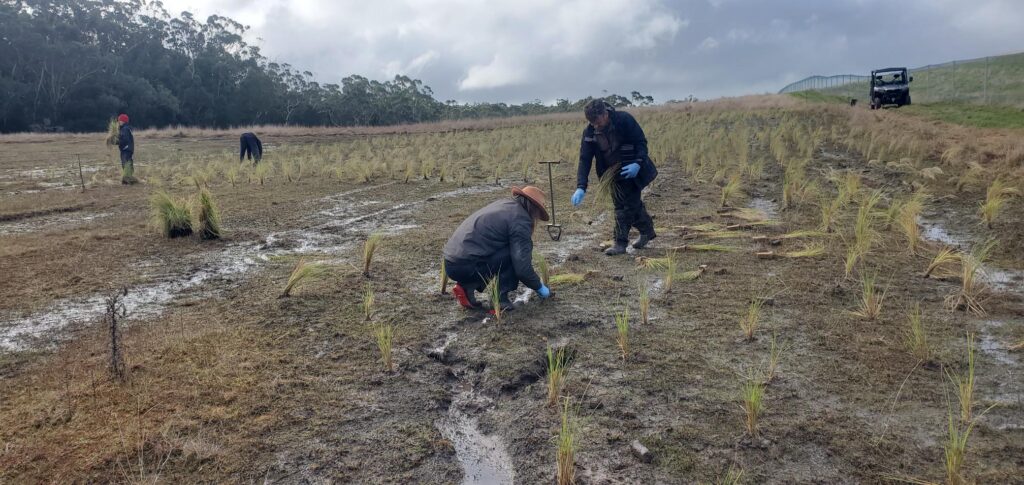
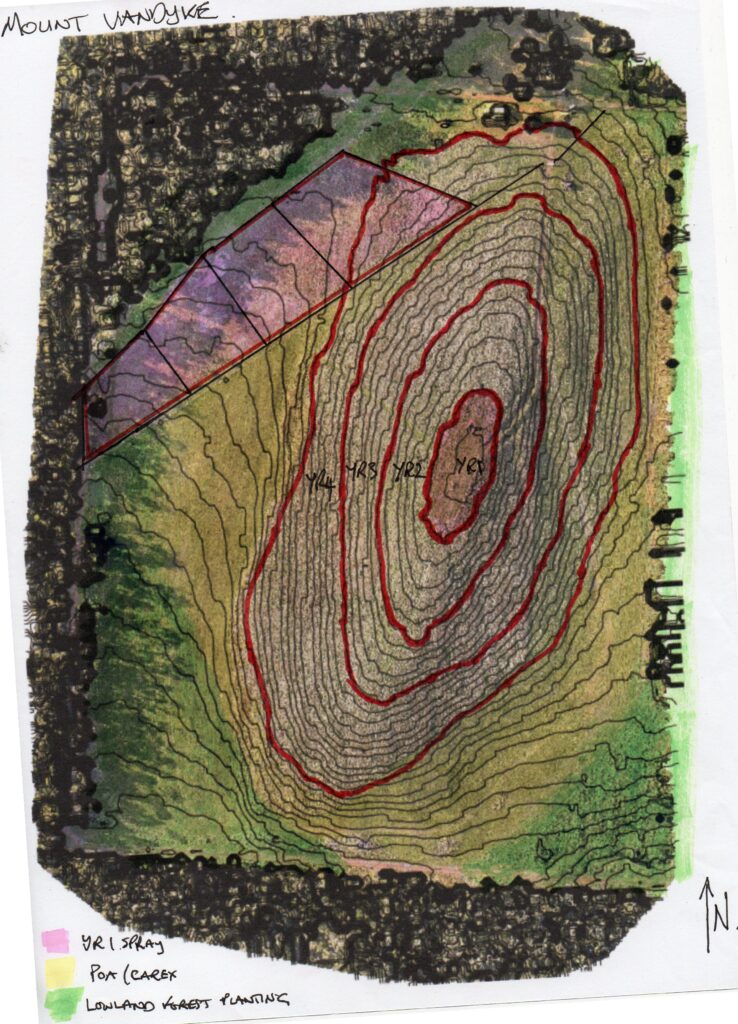
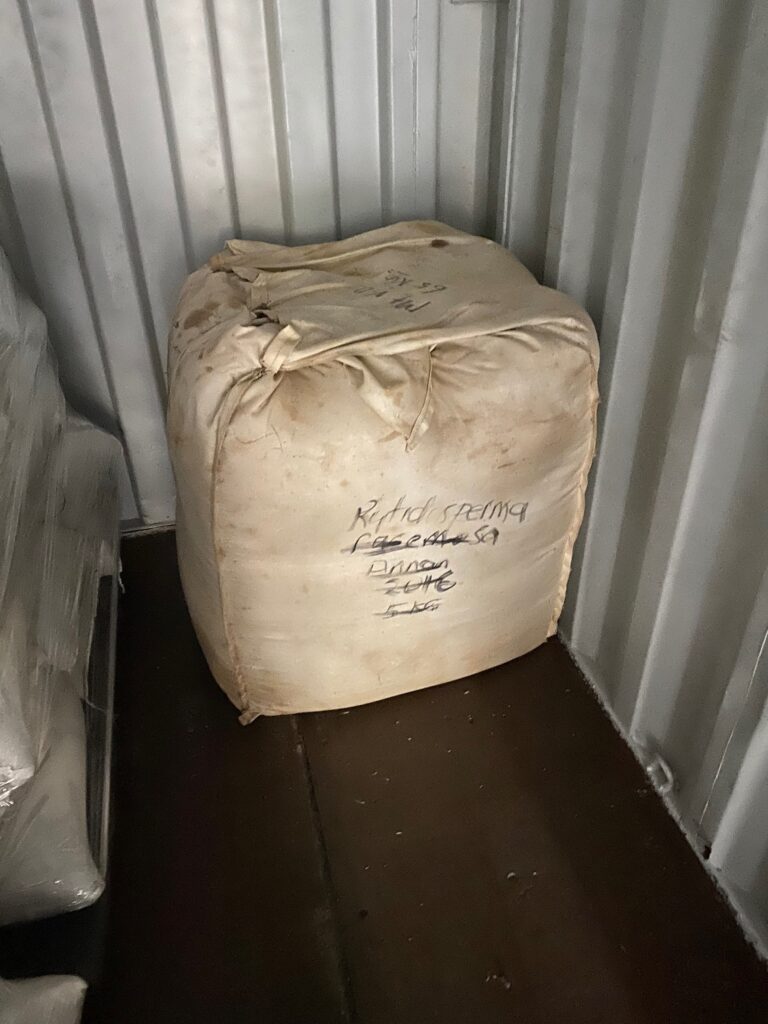
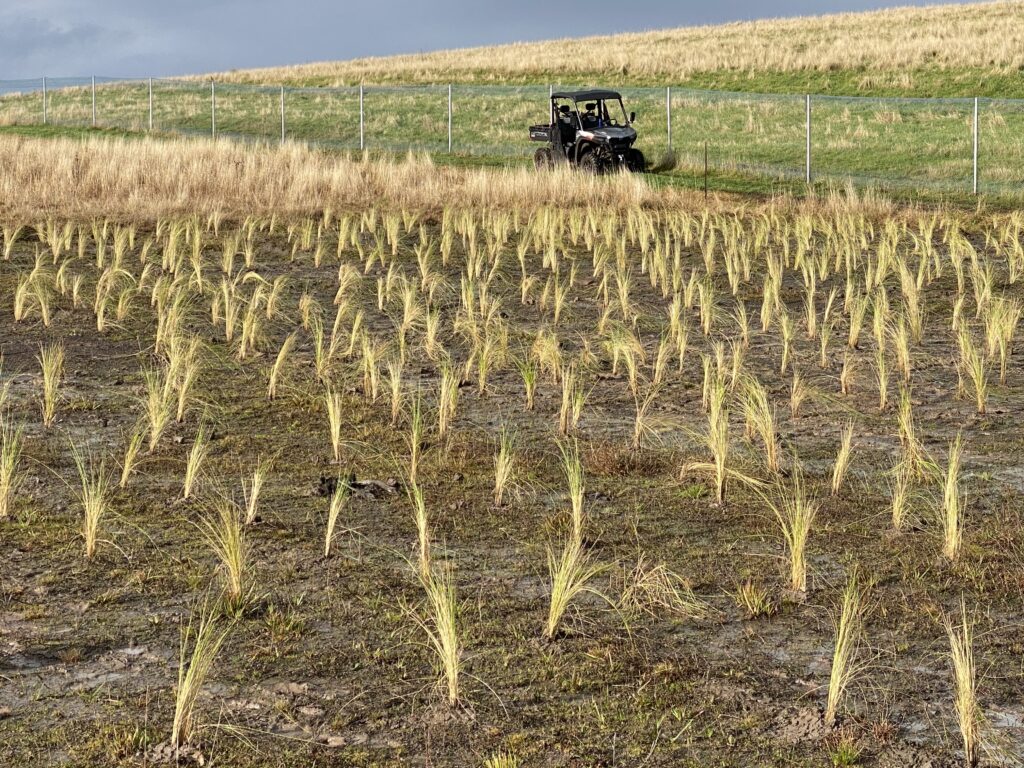
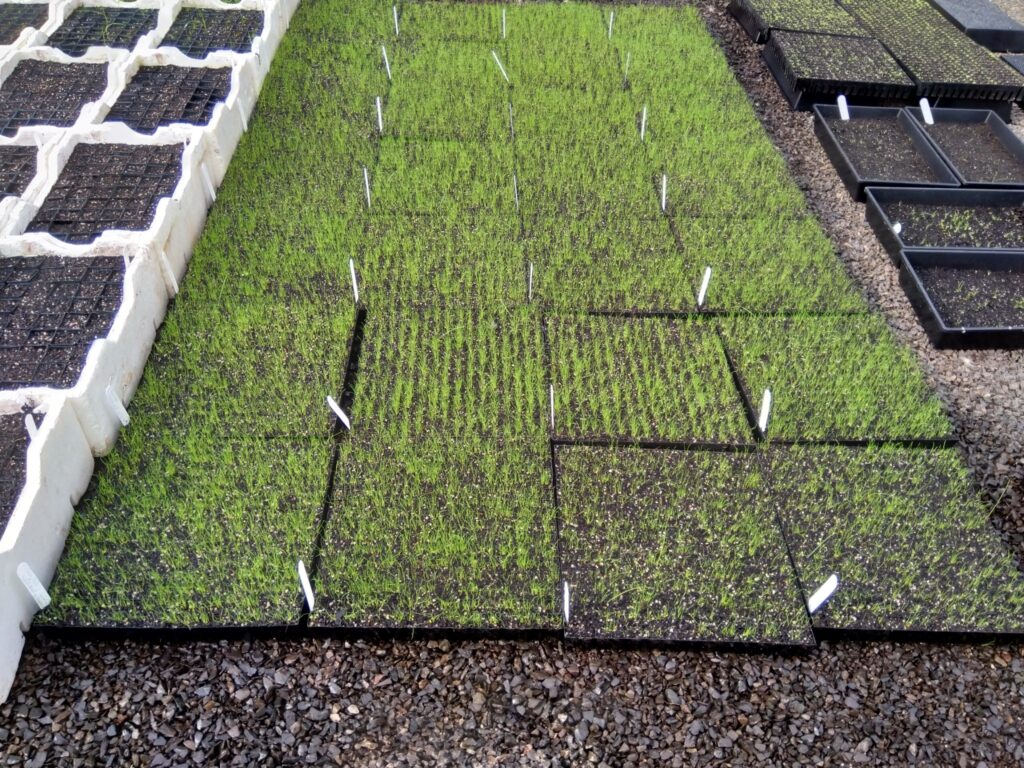
Grassland restoration is extremely challenging, even at the best of times. Apart from the variations in the weather and a changing climate, seed availability is extremely restricted. Only 2 % of the Victorian Volcanic Plain that once extended from Melbourne to Mount Gambier now exists. On my drive over to the South West from Melbourne I travel for five hours across what would have once been dominated by grassy plains. I sometimes pass small roadside and railway remnants and occasionally a property that hasn’t been de-rocked and that still has native pasture being grazed by sheep. On reaching the Cobboboonee National Park that surrounds Mount Vandyke the change is even more obscure. What was once an old growth forest with a grassy understorey (perfect for grazing cattle in the early days of settlement) is now a largely closed forest of regenerating trees and shrubs that is almost impenetrable. To make sense of the ‘grassy hill’ in the forest that was Mount Vandyke, you need to imagine the whole forest as grassy woodland mosaic.
Nature Glenelg Trust has embarked on what will be one of the largest grassland restoration projects in temperate Victoria. For the ultimate success of the reserve, which aims to enhance, supplement or reintroduce small mammal populations in the surrounding Cobboboonee National Park, we are hoping to start a wider discussion about the management of this wider forested landscape. We look forward to comparing notes and putting our heads together with managers of the surrounding public land, to possibly imagine new ways of doing things that will start to restore a more diverse mosaic of habitats, including more open grassy woodland, providing a range of habitats for all the flora and fauna that call this magnificent area home.
The current phase of this project has been made possible thanks to the generous support of private donors to NGT, and the Purryburry Trust

